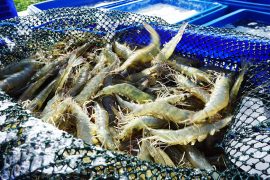
Plants change their roots to survive harsh conditions
Plants are surprisingly adaptable. They can adjust to various challenging environments, including areas with high levels of salt and warm temperatures.
This has been a mystery to scientists for a long time, but a recent study from Wageningen University has revealed some of the remarkable ways that plants change their root structure to survive.
Lateral roots
Plants rely heavily on their side roots, or lateral roots, to absorb water and nutrients from the soil. The roots branch out, expanding the reach of the root system and allowing the plant to access resources from different areas and depths.
This flexibility is crucial for plants to adapt to changing conditions in the soil, such as changes in water availability or nutrient levels.
High salinity
The researchers examined how plants adapt their root systems in salty soil. They focused on a gene called LBD16 and how it gets activated without the usual plant hormone, auxin.
“Plants need lateral roots to absorb water and nutrients. The hormone that regulates the growth of lateral roots is called auxin. Salt hampers the plant’s ability to recognize the signals this hormone emits, causing the development of lateral roots to fall short. And fewer lateral roots means the plant’s general health suffers,” explained study co-author Dr. Christa Testerink.
The team used a small flowering plant called Arabidopsis thaliana for the study. They altered the plant’s genes to see how the changes affected the roots in salty conditions.
How plants manage stress
The researchers found that LBD16 plays a vital role in the growth of side roots. This is especially important when the plant is facing high levels of salt in its environment. LBD16 helps the plant adjust the way its roots grow, allowing it to take in water and nutrients more effectively under these stressful conditions.
Interestingly, under high salinity, LBD16 activates through a different pathway that does not involve auxin. This shows that plants have alternative ways to manage stress, independent of the usual hormone signaling methods.
The experts found a molecule called ZAT6 that plays a crucial role in how plants respond to salt stress, independent of the usual method involving auxin. ZAT6 acts like a switch, turning on the gene LBD16. This, in turn, triggers changes in the plant’s cell walls, allowing roots to continue growing even in salty conditions.
Growth under stress
In a related study, the researchers also explored how warm temperatures and slightly limited water availability (mild water stress) cause roots of Arabidopsis thaliana to grow longer. They conducted experiments where they grew plants under different combinations of water and temperature conditions to see how root growth changed.
The experts specifically looked at how certain genes and proteins, called SnRK2.2, SnRK2.3, and COP1, affect a molecule called HY5 in root cells, and how this impacts the stability of HY5.
Stress response
The findings revealed that Arabidopsis thaliana grows longer roots under warm conditions with slightly limited water availability. The scientists discovered that SnRK2s and COP1 are involved in how plants respond to these conditions.
SnRK2s are important for a stress response pathway, while COP1 helps regulate the stability of another molecule called HY5. Interestingly, COP1 and SnRK2s have opposite effects on HY5 stability, depending on the presence of mild water stress.
When it’s warm and slightly dry, COP1 levels decrease, allowing HY5 to remain stable. This stable HY5 is then crucial for the extra root growth observed under these conditions. The study suggests that the combination of warm temperature and mild water stress works together to reduce COP1, leading to HY5 stabilization and ultimately promoting root elongation.
Broader implications
“This protein (LBD16) takes over auxin’s role as regulator. This discovery provides a critical basis for further studies into similar local molecular networks in lateral roots that help plants function in stressful situations. Not just under saline conditions but also in times of drought or heat. This could help plant breeders to alter the plants’ root growth to create more resilient varieties,” said Dr. Testerink.
Ultimately, the research has the potential to address global food security concerns by creating crops that can grow in difficult conditions, such as salty, dry, or hot soil. This is especially important as climate change, rising sea levels, and land degradation pose increasing threats to our food supply.
Future directions
The team is working with other organizations in the field of agriculture to find practical solutions to the challenges that climate change poses to farming.
“We uncovered several molecular factors that play a role. But, in order to predict how plants handle this combination of stress factors, a more extensive study is required. In the first five years of the CropXR project, we will focus on Arabidopsis,” said Dr. Testerink.
“During the next five years, we will apply the knowledge gained to food crops. We hope this will enable us to develop practicable solutions in collaboration with partners in the field.”
The study is published in the journal The Plant Cell.
Like what you read? Subscribe to our newsletter for engaging articles, exclusive content, and the latest updates.
—-
Check us out on EarthSnap, a free app brought to you by Eric Ralls and Earth.com.













